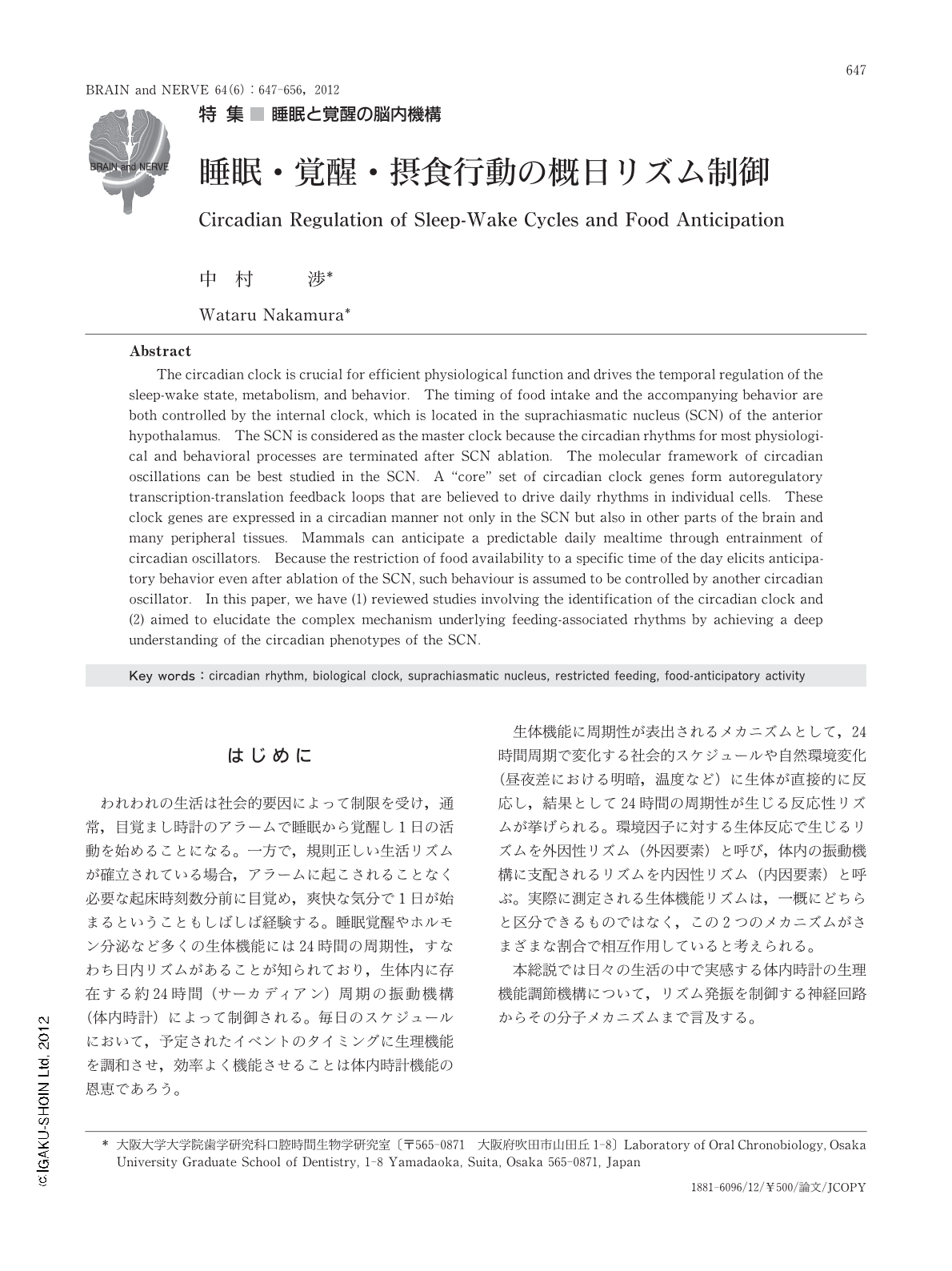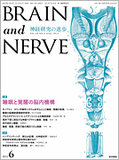Japanese
English
- 有料閲覧
- Abstract 文献概要
- 1ページ目 Look Inside
- 参考文献 Reference
はじめに
われわれの生活は社会的要因によって制限を受け,通常,目覚まし時計のアラームで睡眠から覚醒し1日の活動を始めることになる。一方で,規則正しい生活リズムが確立されている場合,アラームに起こされることなく必要な起床時刻数分前に目覚め,爽快な気分で1日が始まるということもしばしば経験する。睡眠覚醒やホルモン分泌など多くの生体機能には24時間の周期性,すなわち日内リズムがあることが知られており,生体内に存在する約24時間(サーカディアン)周期の振動機構(体内時計)によって制御される。毎日のスケジュールにおいて,予定されたイベントのタイミングに生理機能を調和させ,効率よく機能させることは体内時計機能の恩恵であろう。
生体機能に周期性が表出されるメカニズムとして,24時間周期で変化する社会的スケジュールや自然環境変化(昼夜差における明暗,温度など)に生体が直接的に反応し,結果として24時間の周期性が生じる反応性リズムが挙げられる。環境因子に対する生体反応で生じるリズムを外因性リズム(外因要素)と呼び,体内の振動機構に支配されるリズムを内因性リズム(内因要素)と呼ぶ。実際に測定される生体機能リズムは,一概にどちらと区分できるものではなく,この2つのメカニズムがさまざまな割合で相互作用していると考えられる。
本総説では日々の生活の中で実感する体内時計の生理機能調節機構について,リズム発振を制御する神経回路からその分子メカニズムまで言及する。
Abstract
The circadian clock is crucial for efficient physiological function and drives the temporal regulation of the sleep-wake state,metabolism,and behavior. The timing of food intake and the accompanying behavior are both controlled by the internal clock,which is located in the suprachiasmatic nucleus (SCN) of the anterior hypothalamus. The SCN is considered as the master clock because the circadian rhythms for most physiological and behavioral processes are terminated after SCN ablation. The molecular framework of circadian oscillations can be best studied in the SCN. A "core" set of circadian clock genes form autoregulatory transcription-translation feedback loops that are believed to drive daily rhythms in individual cells. These clock genes are expressed in a circadian manner not only in the SCN but also in other parts of the brain and many peripheral tissues. Mammals can anticipate a predictable daily mealtime through entrainment of circadian oscillators. Because the restriction of food availability to a specific time of the day elicits anticipatory behavior even after ablation of the SCN,such behaviour is assumed to be controlled by another circadian oscillator. In this paper,we have (1) reviewed studies involving the identification of the circadian clock and (2) aimed to elucidate the complex mechanism underlying feeding-associated rhythms by achieving a deep understanding of the circadian phenotypes of the SCN.

Copyright © 2012, Igaku-Shoin Ltd. All rights reserved.


